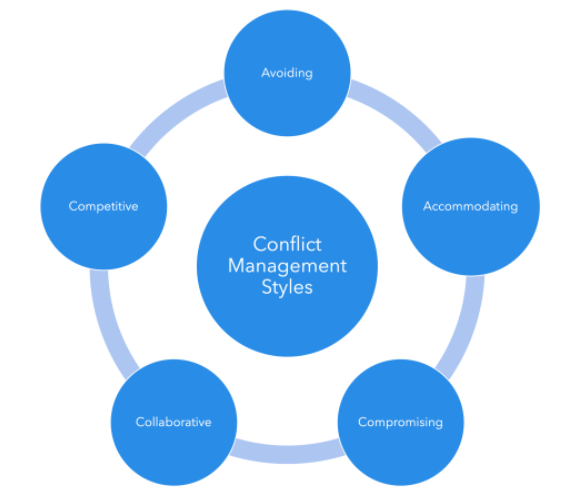Ever caught in the complexities of management, trying to decipher the knots of conflicts? Eager to turn this chaos into seamless coordination? Join me on my blog as we explore the dynamic realm of conflict resolution in project management. Together, let’s unravel the intricacies and pave the way for harmony during managerial challenges.
Conflict management is the process of handling disputes, disagreements, or conflicts in a constructive way to achieve positive outcomes. It involves recognizing the existence of conflicts, addressing them, and finding solutions that are mutually acceptable to the parties involved. The goal of conflict management is not necessarily to eliminate all conflicts but rather to handle them in a way that minimizes negative consequences and promotes positive relationships and outcomes.

In the realm of project management, effective conflict management and resolution are crucial for ensuring project success and maintaining a positive team dynamic. To learn more about conflict management, click on the link below.
Conflict Management and Resolution
Have you watched the video? then let’s apply the knowledge we learned in a scenario. Imagine, that I am the project manager for a software development project in Peterborough. The first thing I need to do is to understand the crucial need for recognizing and managing conflicts from a personal perspective. Right at the beginning of our project, I will make it clear to our diverse team that conflicts are not just unavoidable but can be transformative if we handle them properly.
Then, consider that during the project a conflict emerged between two developers, Sarah, and Alex, concerning our coding approach. First, I would acknowledge its potential impact on our project’s success, realizing that if left unaddressed, conflicts could harm relationships, affect project performance, and erode team trust.

As I dug into the causes of the conflict, it became evident that differing opinions on coding efficiency, values regarding project timelines, and immediate situational perceptions were at play. So, recognizing these factors was crucial for finding a resolution that worked for everyone involved.
Moreover, rather than opting for traditional conflict resolution, I decided to embrace a managed conflict philosophy. I sat down with Sarah and Alex, encouraging them to redirect their conflict towards beneficial problem-solving. Then we aimed for a more constructive resolution that went beyond just the immediate coding issues.
Applying conflict management principles, I proactively identified the conflict, understanding that the conflicts could be detrimental to both our project and our working relationships. Addressing the conflict at an early stage, I facilitated an open discussion between Sarah and Alex, fostering collaboration which is one of the 5 general techniques for resolving conflict as shown in the figure below to find a coding approach that combined the best elements of both their ideas.
Ensuring that the agreed-upon coding approach was implemented, I maintained flexibility for adjustments based on the dynamic software development environment. Now, the team have developed shared ground rules and norms for accommodating diverse work styles while maintaining harmony and positive working relationships through collaboration.

In anticipation of future conflicts, I continuously worked on conflict management throughout the project’s life cycle. Early detection methods, such as monitoring team dynamics and communication, helped identify subtle clues indicating impending conflicts. Also, emphasizing documentation of conflict management methods during project communication planning ensured a proactive approach to future conflicts.
Conclusion
To summarize, as someone navigating the challenges of any project, we must strive to guide the team through conflicts by embracing a managed conflict philosophy, proactively addressing issues, and utilizing the five resolution methods such as avoiding, accommodating, collaborating, competitive, and compromising. By doing so, conflicts become opportunities for positive change, ultimately ensuring the success of the project and enhancing overall team dynamics.
Reference
Mekelburg, D. (2000). From conflict to collaboration: beyond project success. Paper presented at Project Management Institute Annual Seminars & Symposium, Houston, TX. Newtown Square, PA: Project Management Institute. https://www.pmi.org/learning/library/conflict-collaboration-beyond-project-success-1899
Project Management Institute. (2017). A Guide to the Project Management Body of Knowledge (PMBOK® Guide) – 6th Edition.
Hi, this is a comment.
To get started with moderating, editing, and deleting comments, please visit the Comments screen in the dashboard.
Commenter avatars come from Gravatar.